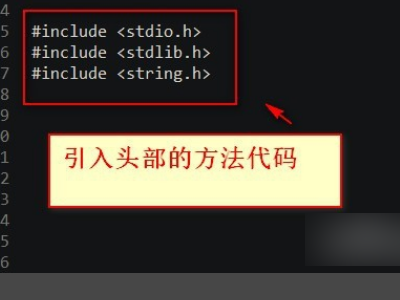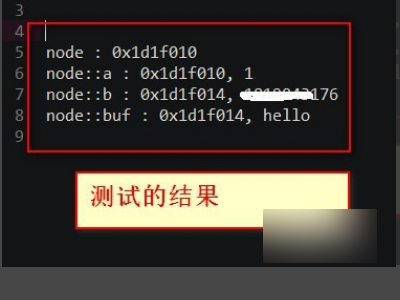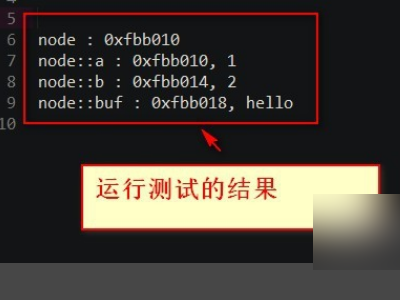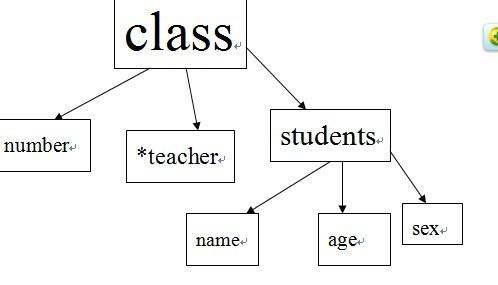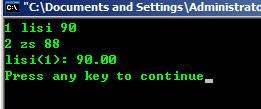代码如下:
#include<
stdio.h
>#include<
stdlib.h
>int main()
{struct Student//声明
结构体
类型 { int num;
char name[20];
float score;
}
student1,student2;//定义两个结构体变量
scanf("%d%s%f",&student1.num,student1.name,&student1.score);//输入两个学生的数据
scanf("%d%s%f",&student2.num,student2.name,&student2.score);
printf("The higher score is:\n");
if(student1.score>student2.score)
printf("%d %s %6.2f\n",student1.num,student1.name,student1.score);
else if(student1.score<student2.score)
printf("%d %s %6.2f\n",student2.num,student2.name,student2.score);
else
{printf("%d %s %6.2f\n",student1.num,student1.name,student1.score);
printf("%d %s %6.2f\n",student2.num,student2.name,student2.score);
}
return 0;
}
扩展资料
结构体作用
结构体和其他类型基础
数据类型
一样,例如int类型、char类型,只不过结构体可以做成你想要的数据类型。以方便日后的使用。在实际项目中,结构体是大量存在的。研发人员常使用结构体来封装一些属性来组成新的类型。由于C语言内部程序比较简单,研发人员通常使用结构体创造新的“属性”,其目的是简化运算。
结构体在函数中的作用不是简便,其最主要的作用就是封装。封装的好处就是可以再次利用。让使用者不必关心这个是什么,只要根据定义使用就可以了。
访问结构成员
为了访问结构的成员,我们使用成员访问
运算符
(.)。成员访问运算符是结构变量名称和我们要访问的结构成员之间的一个句号。您可以使用 struct 关键字来定义结构类型的变量。结构作为函数参数
您可以把结构作为函数参数,传参方式与其他类型的变量或指针类似。
指向结构的指针
您可以定义指向结构的指针,方式与定义指向其他类型变量的指针相似,如下所示:
struct Books *struct_pointer;
现在,您可以在上述定义的指针变量中存储结构变量的地址。为了查找结构变量的地址,请把 & 运算符放在结构名称的前面,如下所示:
struct_pointer = &Book1;
为了使用指向该结构的指针访问结构的成员,您必须使用 -> 运算符,如下所示:
struct_pointer->title;
